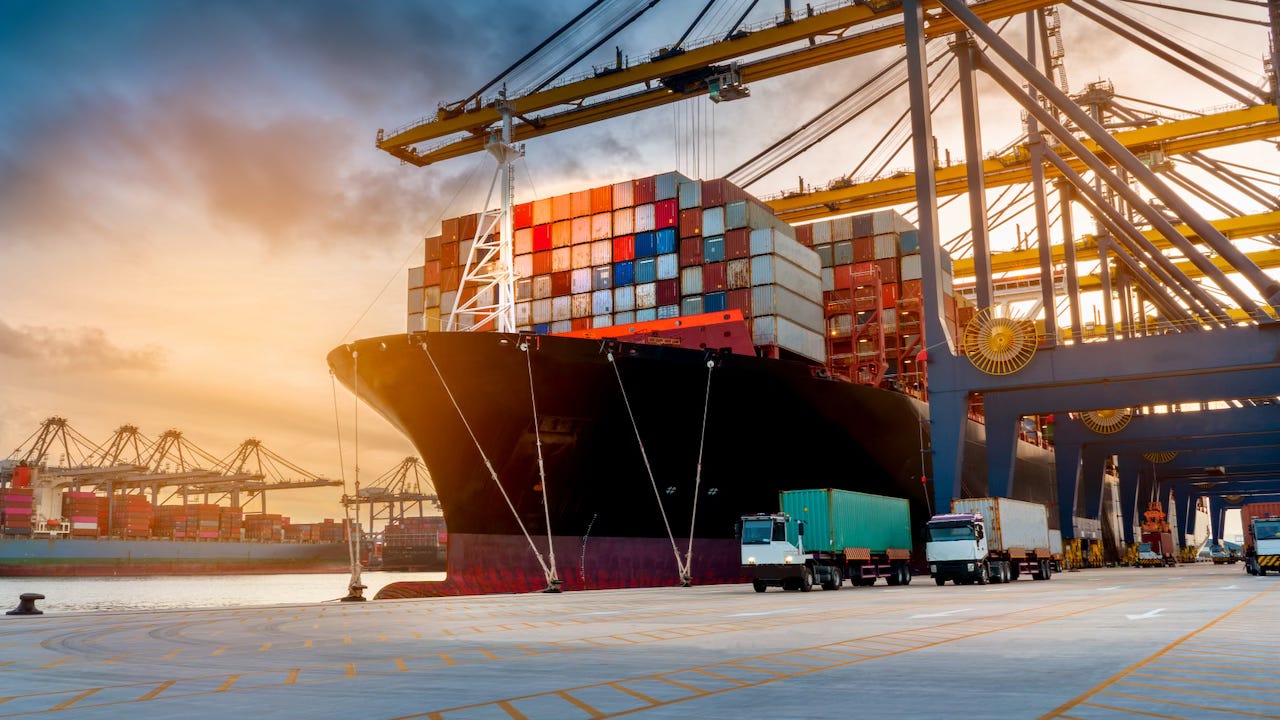Ports of Vulnerability
How the U.S. Fell Behind—and How to Regain Ground
This post is part of my Mind the Gap series, which examines critical disconnects between strategic ambitions and the tools provided to achieve them.
Ninety percent of global trade travels by sea. Yet the maritime domain—the arteries of the global economy—is quietly becoming one of America’s most pressing strategic vulnerabilities. While the U. S. rightly invests in naval modernization, shipbuilding, and domestic port resilience, China has methodically embedded itself in the infrastructure and logistics systems that govern global shipping.
Through a network of state-directed enterprises—COSCO, China Merchants Port, ZPMC, and CCCC—the Chinese Communist Party (CCP) has gained control or operational influence over more than 129 foreign port projects. At critical chokepoints from the Suez Canal to the Panama Canal to Greece’s Port of Piraeus, China is not merely building capacity—it is accumulating leverage.
Americans are awakening to the strategic risks of China’s monopoly over rare earths. Yet our failure to respond to China’s maritime dominance could have even more ominous consequences. In ports as with rare earths, China is following Sun Tzu’s maxim to win without fighting—using commercial platforms to gain strategic leverage before a shot is ever fired.
A Hidden Threat: Ports and Platforms
This is not just about cranes and docks. China’s LOGINK platform—a state-run global logistics information system—is being adopted by customs and port authorities around the world. It gives the CCP real-time visibility into global cargo flows, including sensitive U.S. commercial and potentially military logistics. What looks like benign logistics management is, in fact, a strategic surveillance system embedded in the backbone of global trade.
Meanwhile, the U.S. posture is alarmingly fragile:
Less than 1% of global commercial shipping flies a U.S. flag.
Our Ready Reserve Force is small, aging, and dependent on foreign-flagged ships.
We lack a global container shipping champion.
We hold few overseas port concessions.
And we have no unified U.S. strategy to counter China’s geoeconomic maritime positioning.
Operation Spiderweb: A Wake-Up Call
In Ukraine, Operation Spiderweb revealed how drones can be launched from commercial container-sized boxes—turning any ship or port into a potential launchpad for attack, including from American soil. This is not just a naval challenge—it is a logistics and infrastructure vulnerability. The battlefield now includes the commercial maritime domain, long assumed to be neutral.
Five Steps to Secure the Maritime Frontier
To address these growing vulnerabilities, I propose five immediate actions:
1. Launch a Harbor Accord
Modeled after the Artemis Accords for space, the Harbor Accord would be a voluntary, principles-based framework uniting treaty allies and neutral partners around shared norms for maritime infrastructure security.
Core commitments would include:
Transparency of port ownership and logistics platform usage
Cybersecure operations—including standards and oversight mechanisms that mitigation of risks posed by LOGINK
Commitments to commercial neutrality during peacetime
Pre-negotiated surge access arrangements for crisis scenarios, either as part of the accord or through bilateral protocols
This accord would reinforce the principle that commercial infrastructure should not be weaponized and that open access must be maintained during crises.
2. Appoint a National Security Council Lead on Maritime Infrastructure
The U.S. needs a Senior Director for Global Port Security and Maritime Infrastructure at the National Security Council to unify defense, intelligence, commerce, and development efforts.
Responsibilities:
Lead strategy on international, not just domestic, port access and commercial risk mapping
Coordinate countermeasures to LOGINK proliferation
Oversee Harbor Accord implementation
If this cannot be housed within the NSC, an alternative would be to assign this portfolio to the U.S. Trade Representative or to a designated maritime security envoy jointly coordinated across agencies.
3. Modernize and Expand Dual-Use Sealift
The U.S. military depends on commercial sealift for crisis response, yet our capability is in decline. To reverse this:
Expand and modernize the Maritime Security Program (MSP) and Tanker Security Program
Include resilience clauses in logistics contracts to ensure wartime surge capacity
Secure access agreements with allied carriers and ports
Reinvest in maritime workforce development, including the U.S. Merchant Marine Academy
4. Incentivize Trusted Port Partnerships
Using the Development Finance Corporation (DFC) and EXIM Bank, we should support the global expansion of trusted allied terminal operators—such as APM Terminals (Denmark), Hapag-Lloyd Terminals (Germany), and ICTSI (Philippines)—in regions vulnerable to PRC influence.
These investments should be paired with reciprocal access agreements, modeled after the Maritime Security Program, ensuring that U.S. and allied forces can access key terminals in times of crisis.
5. Secure Port Access Before the Next Crisis
The United States must proactively negotiate binding port access agreements—both military and commercial—with strategic ports in the Indo-Pacific, including those in Japan, South Korea, India, and the Philippines. Waiting until tensions rise risks denial of access when it matters most.
A Strategy for Alignment, Not Reaction
The CCP has executed a long-term strategy of influence through port infrastructure and logistics software—without firing a shot. We cannot match China port-for-port or outbid them at every terminal. But we can out-align them through shared standards, resilient partnerships, and coordinated leadership.
The maritime domain is a critical—and underappreciated—front in today’s geoeconomic competition. The time to act is not in the next crisis. It is now
In line with my belief that responsibly embracing AI is essential to both personal and national success, this piece was developed with the support of AI tools, though all arguments and conclusions are my own.
.

Excellent article Sir!
Hi, actually it is the Communist Party of China. They have changed the title from "CCP".